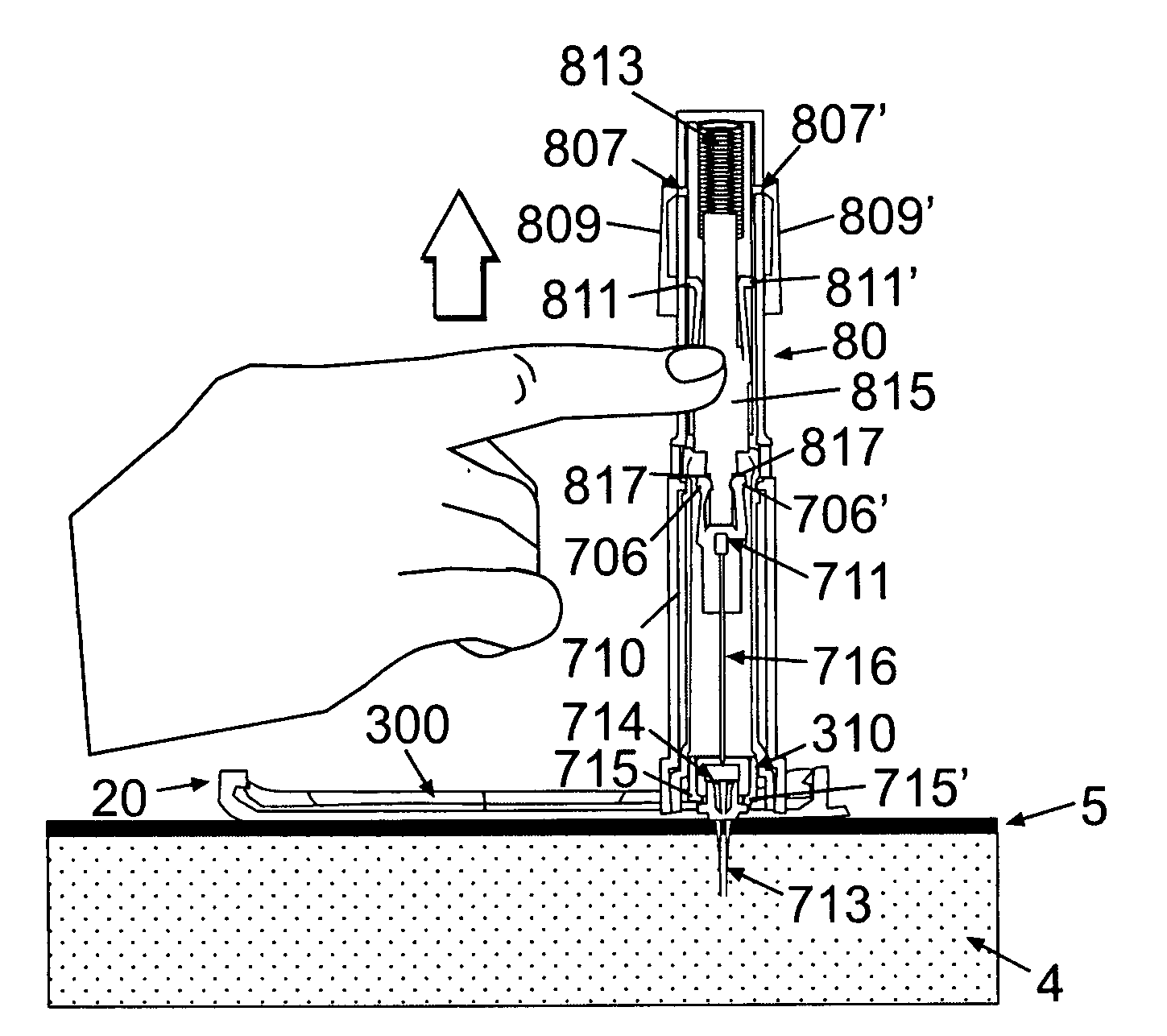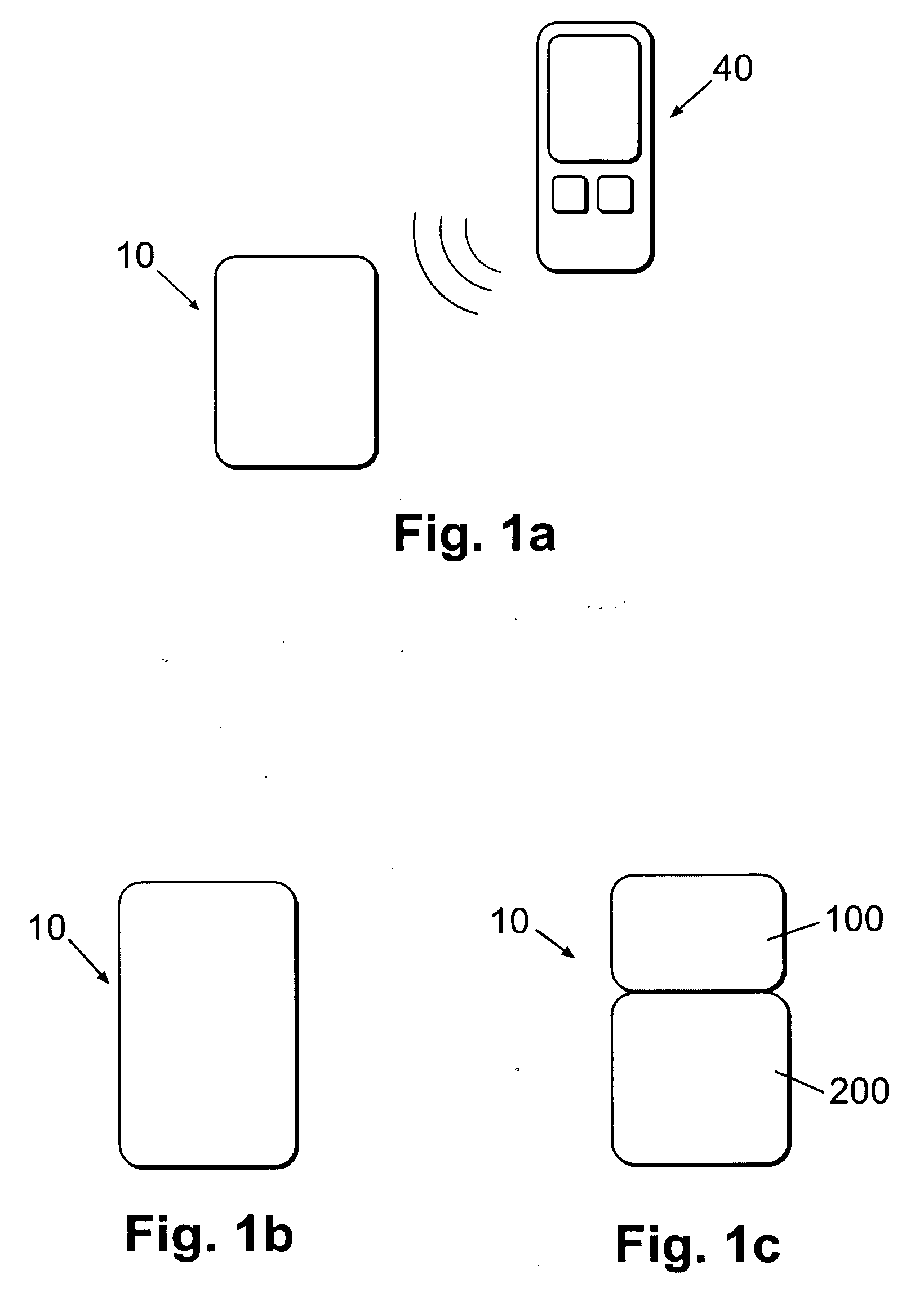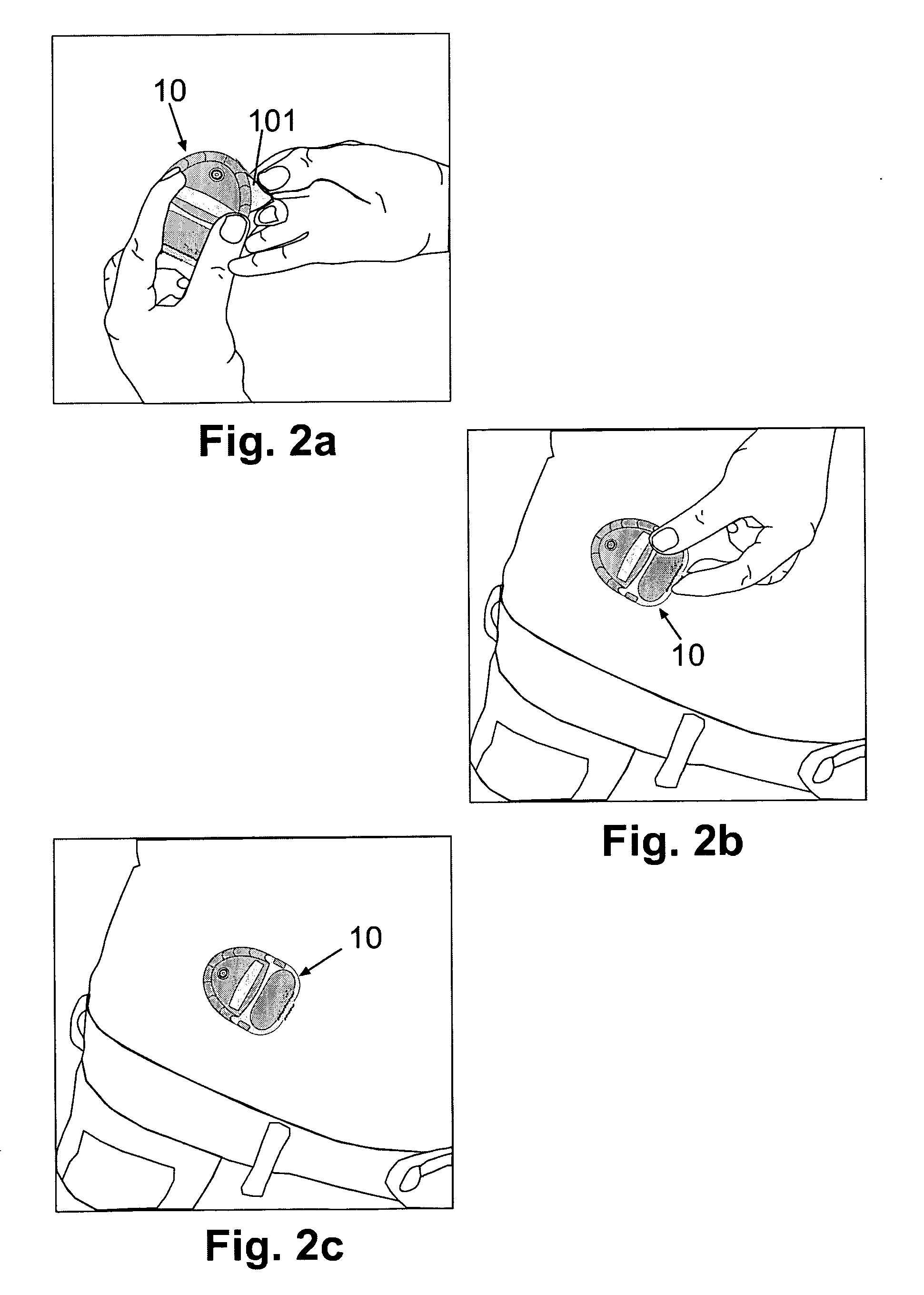Insertion device
a technology of insertion device and syringe, which is applied in the field of medical devices, can solve the problems of insufficient manual dexterity, difficulty in proper insertion of cannula, and pain of insertion,
- Summary
- Abstract
- Description
- Claims
- Application Information
AI Technical Summary
Benefits of technology
Problems solved by technology
Method used
Image
Examples
Embodiment Construction
[0067]A skin adherable insulin delivery device was disclosed in a co-owned / co-pending International Patent Application No. PCT / IL07 / 000932, filed Jul. 24, 2007, claiming priority to U.S. Provisional Patent Application No. 60 / 833,110, filed Jul. 24, 2006, and U.S. Provisional Patent Application No. 60 / 837,877, filed Aug. 14, 2006, and also disclosed in a co-owned / co-pending U.S. patent application Ser. No. 12 / 004,837, and International Patent Application No. PCT / IL07001578, both filed Dec. 20, 2007 and both claiming priority to U.S. Provisional Patent Application No. 60 / 876,679, filed Dec. 22, 2006. The disclosures of the above applications are incorporated herein by reference in their entirety. The device contains a remote control unit and a skin adherable unit (“dispensing patch unit”). The dispensing patch unit is coupled to a unique cannula apparatus, which does not require an infusion set and long tubing. The cannula apparatus allows the patient to choose the desired depth and a...
PUM
 Login to View More
Login to View More Abstract
Description
Claims
Application Information
 Login to View More
Login to View More - R&D
- Intellectual Property
- Life Sciences
- Materials
- Tech Scout
- Unparalleled Data Quality
- Higher Quality Content
- 60% Fewer Hallucinations
Browse by: Latest US Patents, China's latest patents, Technical Efficacy Thesaurus, Application Domain, Technology Topic, Popular Technical Reports.
© 2025 PatSnap. All rights reserved.Legal|Privacy policy|Modern Slavery Act Transparency Statement|Sitemap|About US| Contact US: help@patsnap.com



